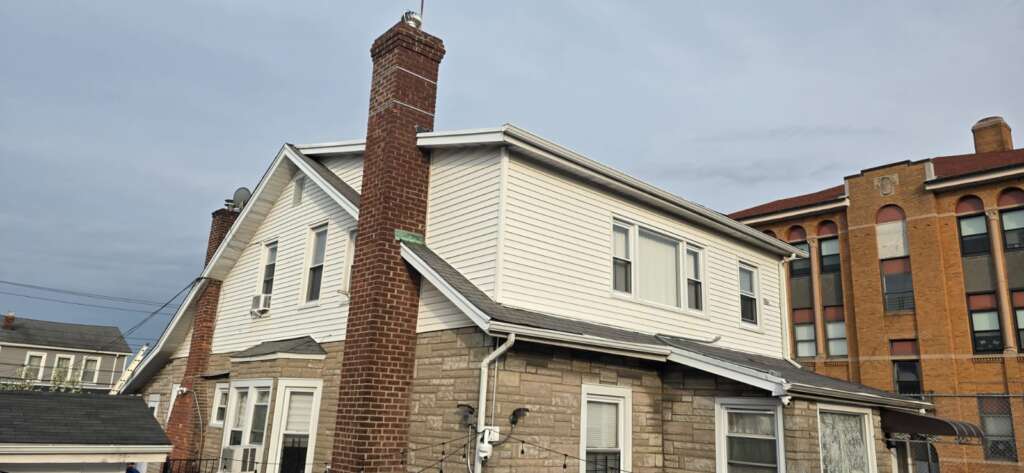Replacing the siding on your home is a big decision. It’s an investment that protects your house, keeps your family safe from the elements, and improves curb appeal. But siding isn’t something you replace lightly. Different materials have varying lifespans, and proper care can significantly extend the life of your siding.
If you’re wondering when it’s time for a replacement, RH Renovation LLC, a trusted roofing and siding contractor in Westchester, can help. In this guide, we’ll go over the signs that siding needs replacing, how long different materials typically last, and tips for getting the most out of your siding.
Signs It’s Time to Replace Your Siding
The easiest way to know whether your siding needs replacement is to take a careful look at it. Many problems are visible, though some may require a closer inspection. Here are common warning signs that it might be time to consider new siding:
- Cracks, warping, or rot: If your siding is splitting, bending, or rotting, it’s no longer providing proper protection.
- Bubbling or blisters: These usually indicate moisture trapped behind the siding, which can lead to mold and structural damage.
- Mold or mildew growth: Large patches of mold or mildew, particularly near seams, are a clear sign that your siding isn’t functioning as it should.
- Peeling paint inside your home: Moisture penetrating the siding can damage interior walls and paint.
- Severe fading or discoloration: This is not just cosmetic—faded siding may have lost some of its weather-resistant properties.
- Higher energy bills: Old or damaged siding may allow heat or cool air to escape, increasing your utility costs.
If you notice any of these issues, it’s advisable to contact a professional to assess your siding. RH Renovation LLC offers inspections in Westchester to help homeowners make informed decisions for their budget and home.
How Long Does Siding Last?
The lifespan of siding varies depending on the material, weather exposure, and the level of maintenance. Harsh storms, UV exposure, and moisture can all significantly reduce the lifespan of siding. Damage from falling branches or pests may also necessitate an early replacement.
Here’s a breakdown of typical lifespans for common siding materials:
Vinyl Siding
Vinyl siding is one of the most popular options for homes today. It is durable, affordable, and low-maintenance. With proper care, vinyl siding can last 30 to 40 years. It resists mold and rot and is easy to clean with a hose or mild soap.
Fiber Cement Siding
Fiber cement siding is a composite material that combines wood pulp and cement, resulting in a strong, weather-resistant material. It can last 25 to 30 years. Installing fiber cement is more labor-intensive than vinyl, making it slightly more expensive. However, its durability makes it an excellent choice for long-term protection.
Cellular PVC or Composite Siding
Newer siding materials, such as cellular PVC or engineered composites, are designed for durability and a premium appearance. They are highly resistant to moisture and pests while offering a modern appearance. These options can also last 30 to 50 years with proper care.
Aluminum Siding
Aluminum siding was widely used before vinyl became popular. It resists rot and insects but is prone to denting. Aluminum siding requires painting over time and is no longer as popular as vinyl siding. Its lifespan can range from 20 to 40 years, depending on the level of maintenance.
Wood Siding
Wood siding offers a natural, classic look but requires more upkeep. It is susceptible to pests, moisture, and mold. Even with regular maintenance, wood siding typically lasts 15 to 30 years. Regular painting or sealing is necessary to keep it looking its best.
Extending the Lifespan of Your Siding
No siding lasts forever, but taking good care of it can help it reach or even exceed its expected lifespan. Here are some practical tips:
- Clean your siding regularly: Dirt and debris can accelerate wear and tear on your siding. Use gentle cleaners and a soft brush or cloth to clean. Avoid pressure washing, as it can damage the siding.
- Inspect for damage: Check seams, corners, and areas around windows and doors for any signs of damage. Catching minor issues early can prevent more extensive damage.
- Maintain your gutters: Properly functioning gutters direct water away from your siding, protecting it from moisture damage.
- Trim plants near your home: Branches and vines can scratch, trap moisture, and create opportunities for pests to infest your property.
Regular maintenance not only extends the life of your siding but also preserves your home’s appearance and energy efficiency.
Choosing the Right Time for Replacement
Even with proper maintenance, siding will eventually need replacement. Knowing the typical lifespan of your material and watching for warning signs will help you plan the best time for an upgrade. Replacing siding proactively rather than waiting for severe damage can save money in the long run, reduce stress, and improve your home’s safety and energy efficiency.
When you’re ready to replace your siding in Westchester, RH Renovation LLC offers professional installation and consultation. Our team can help you select the best siding material for your home’s style, climate, and budget, ensuring long-lasting protection and a polished look.
Contact RH Renovation LLC for Siding Replacement in Westchester
Replacing your siding is an investment in your home’s protection and curb appeal. RH Renovation LLC provides expert siding assessments, replacement, and installation services in Westchester.
Don’t wait until your siding is failing. Contact RH Renovation LLC today to schedule a complimentary consultation and receive a personalized estimate. Protect your home, enhance its value, and enjoy a siding solution that lasts for decades.



